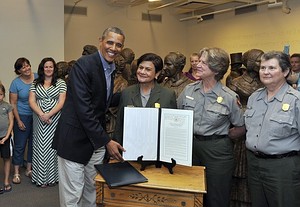The title seems like an obvious statement, but there are actually a lot of complications that starting a family can have on your career. Many businesses do not go out of their way to help new parents succeed as employees and moms, and that puts a lot of additional stress on women who are already going through one of the more stressful periods of their lives. Childcare, especially for children under two, is extremely hard to come by and can end up costing a fortune just to allow you to work your regular job. People having been asking me recently how I believe that problem should be addressed, and I recently sat down with Gwen Morgan of FastCompany to discuss how we at Palo Alto Software deal with the issue. The answer: family-friendly policies that allow kids in the workplace so that you never have to choose between your family and your career!
Here’s a preview of my interview with Fast Company, and you can read the full article here!
“At Eugene, Oregon-based Palo Alto Software, a company that develops business planning and other business-focused software, every day is Take Our Daughters and Sons to Work Day. CEO Sabrina Parsons, who has led the company since 2007, is a staunch advocate of family-friendly policies and is trying to help her employees and others in the tech sector deal with the fact that people have babies. Taking care of them shouldn’t derail your career.
Parsons says that the juggling work and parenting is tough for all parents, but the physical and societal demands placed on women hold particular challenges. From getting pregnant and giving birth to the disparity in many caregiving situations, she says parenting puts women’s careers at risk more than men’s.
“You’re in the prime of your career with all of this experience, when you get mommy-tracked. They get ‘concerned’ that you can’t do your job. That’s a huge reason why we’re not seeing women in leadership roles across Fortune 500 and Fortune 1000 companies and in politics,” she says.”
If you’re still interested in learning more about Palo Alto’s policies on family, I discussed more details with Natalie Matthews of Elle here



 I recently wrote an article for
I recently wrote an article for 

 To some this may be appear to be an odd statement, because to suggest that a dad is a “working dad” is not news. Dads are expected to work, so much so that “working dad” isn’t a phrase that comes up in everyday conversation like “working mom” does. I believe that the lack of conversation about working dads is a social norm that needs to be changed. Just as gender roles for women have evolved, roles for men have changed too—fathers are now more involved with parenting than ever before, and they face many of the same struggles as mothers when it comes to balancing work and home lives.
To some this may be appear to be an odd statement, because to suggest that a dad is a “working dad” is not news. Dads are expected to work, so much so that “working dad” isn’t a phrase that comes up in everyday conversation like “working mom” does. I believe that the lack of conversation about working dads is a social norm that needs to be changed. Just as gender roles for women have evolved, roles for men have changed too—fathers are now more involved with parenting than ever before, and they face many of the same struggles as mothers when it comes to balancing work and home lives.


